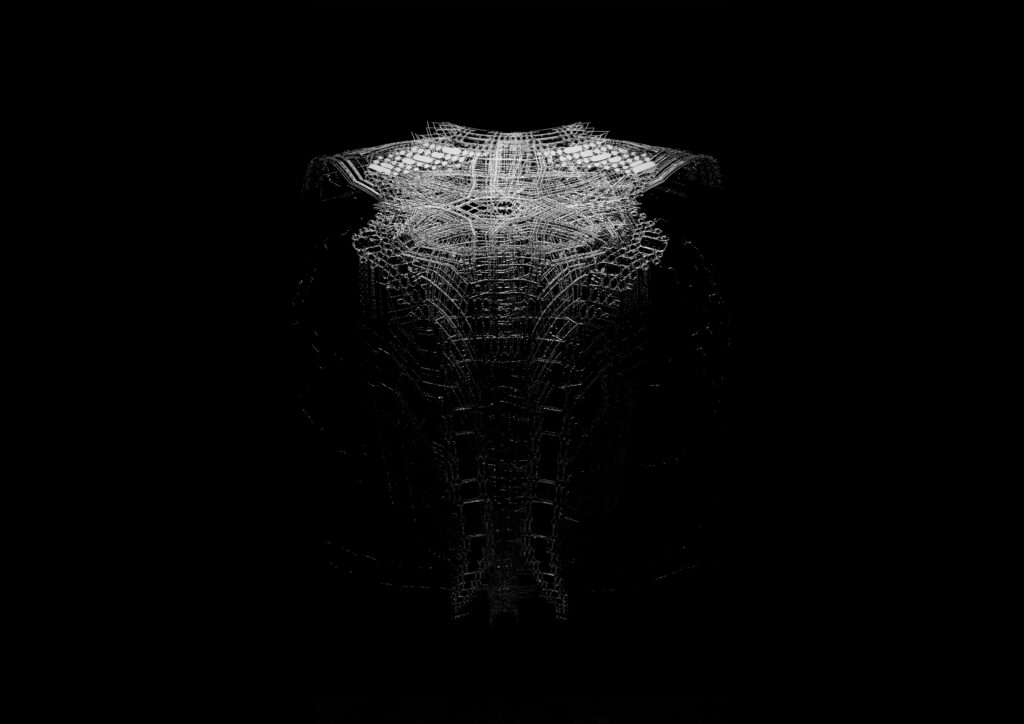Cheng-Wei Lee, winner of the “Emerging Landscape Architect of the Year” title at the BLT Built Design Awards 2024, presents his experimental project Exoskeletons. This project delves into arthropod exoskeletons’ structural and morphological principles as a source of inspiration for new construction methods in landscape architecture. A Bartlett School of Architecture graduate at UCL, Cheng-Wei combines advancements in additive manufacturing with bio-inspired computational design to create efficient and adaptable structures.
In this interview, Cheng-Wei discusses the design process behind Exoskeletons, including developing a custom algorithmic workflow that optimizes material efficiency by responding to load and strain levels. Join us as we explore the innovative ideas behind this award-winning project.

What inspired you to use arthropod exoskeletons as a model, and how did you translate their structural principles into architectural form?
I’ve always been fascinated by efficient and topology-optimized structures in nature. Their ability to optimize strength while minimizing material use inspired me to investigate how similar principles could translate into architecture. By studying their load distribution and geometry, I developed a procedural design computational workflow to simulate and replicate these characteristics in structural forms.
How does the load-responsive process in Exoskeletons work to adapt the structure’s density and orientation to strain levels? What benefits does this bring?
The load-responsive process involves simulating strain levels across the structure and adjusting the density and orientation of its elements accordingly. This ensures material is allocated where needed most, enhancing strength and efficiency. The benefits include reduced material waste, optimized structural performance, and a visually dynamic result that reflects the forces it supports.


What was your approach to balancing aesthetics and structural efficiency? Were there specific areas where you had to compromise to maintain a visually engaging design?
Achieving harmony between aesthetics and efficiency was one of the most rewarding challenges. I prioritized structural logic as the foundation but ensured the patterns and forms remained visually compelling. There were moments of compromise, especially when balancing intricate designs with structural constraints, but these moments also led to creative breakthroughs.
Could you walk us through some of the key challenges you faced in developing your custom algorithm and how you managed to solve them?
Developing the custom procedural design required solving complex problems related to scalability and precision. Early iterations struggled to balance computational optimization iterations with accuracy. This work was inspired and guided by architectural design prospect research at The Bartlett School of Architecture. I extend my deepest gratitude to Professor Kostas Grigoriadis, whose profound expertise in topology optimization has been instrumental in shaping my approach. My heartfelt thanks also go to my skill tutor, Samuel Esses, for his invaluable guidance in mastering Houdini and integrating it with material distribution techniques for this project. Their mentorship and support have been crucial to this achievement.
As someone working with additive manufacturing and bio-inspired computational design, how do you see these technologies influencing the future of landscape architecture?
I see additive manufacturing and bio-inspired computational design revolutionizing how we approach landscape architecture. These technologies allow for hyper-localized, sustainable designs that adapt to environmental and cultural contexts, transforming how we think about both form and function in natural spaces.
Congratulations on winning the BLT Awards “Emerging Landscape Architect of the Year” prize! Has this recognition shaped your goals and approach to your studies and future career?
Winning the BLT Built Design Award has been an incredible honor. It has motivated me to push further in exploring innovative intersections of technology, nature, and design. It has reinforced my commitment to combining research with practical applications in my studies and future career.


Do you plan to continue exploring bio-inspired structures in future projects? What do you want your future as a designer to look like?
Absolutely, I plan to continue exploring bio-inspired structures in future projects. My goal is to create designs that are not only functional but also embody the intelligence and beauty of natural systems. I envision a future where my work bridges cutting-edge technology with sustainable, impactful design.










